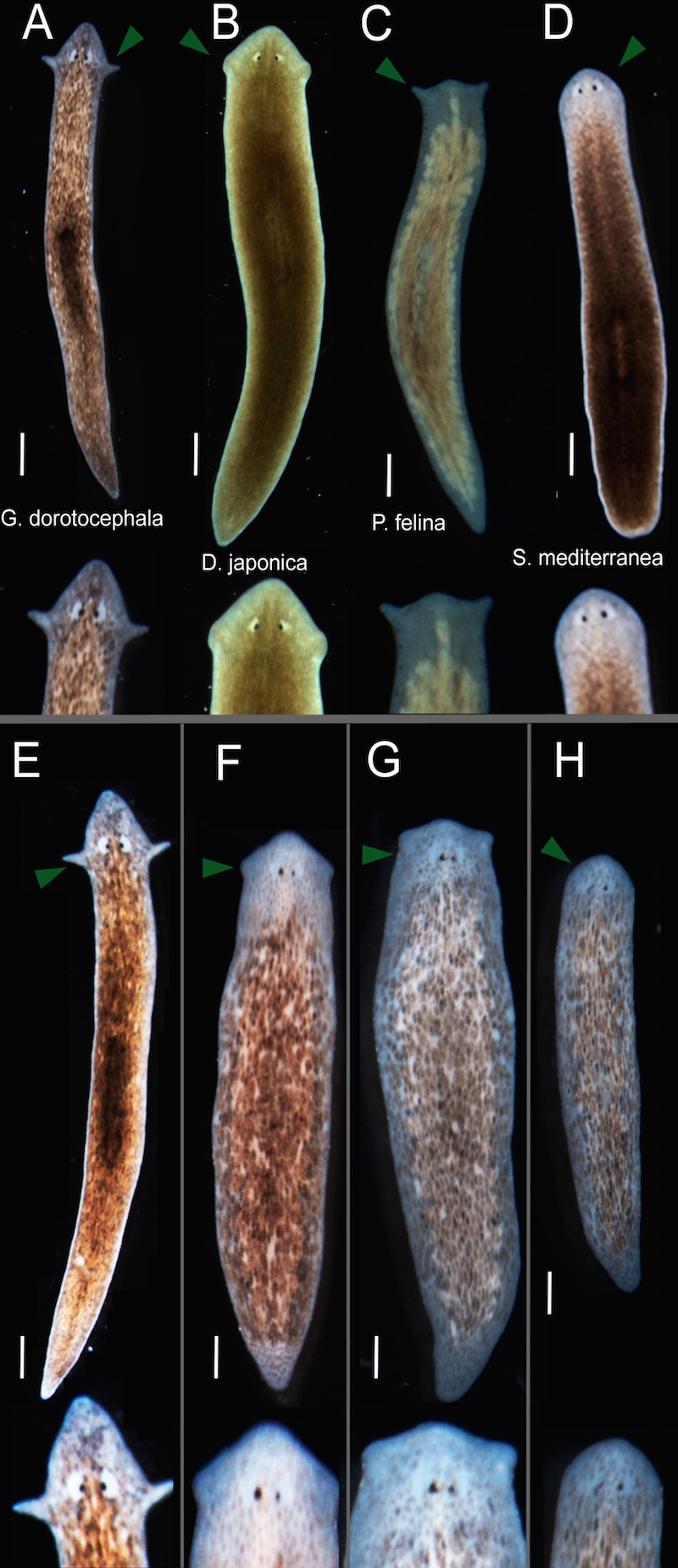Franken Flatworms Grow Heads and Brains of Other Species

Call them Franken flatworms. Scientists have created worms with the heads and brains of other species just by manipulating cell communication.
The research is an example of how development is controlled by more than genetics alone. The researchers did not alter the flatworms' DNA in any way, but instead manipulated proteins that control conversations between cells.
"It is commonly thought that the sequence and structure of chromatin — the material that makes up chromosomes — determine the shape of an organism, but these results show that the function of physiological networks can override the species-specific default anatomy," study researcher Michael Levin, a biologist at Tufts University, said in a statement. [See Photos of the Franken Flatworms with Different Heads, Brains]
The changes are temporary for the worms, whose heads begin to revert back to their original shapes in weeks. But researchers hope the findings will lead to treatments for birth defects and even regenerative medicine, which aims to replace or rebuild damaged tissues and organs.
The researchers studied a small freshwater flatworm, Girardia dorotocephala, which is known for being able to regenerate lost tissues. These flatworms retain a large number of cells called neoblasts, which are totipotent stem cells, meaning they can become any cell type in the body. In humans, cells are totipotent only in the first days of embryonic development.
First, the scientists cut off the heads of their lab specimens. Next, to alter the flatworm's regenerating head, Levin and his colleagues interrupted protein channels called gap junctions. Cells send electrical impulses through these junctions in order to communicate. The researchers found that they could easily nudge the worm to develop head and brain shapes similar to those of other closely related flatworm species.
Normally, G. dorotocephala sports a pointy head with two elongated, earlike projections (called auricles) next to the eyes. After treatment, some of the worms developed their normal heads, while others grew rounded heads like those of S. mediterranea; heads with thick necks and pointy, catlike "ears" like those of P. felina; or triangular heads like those of D. japonica.
Get the world’s most fascinating discoveries delivered straight to your inbox.
The brains seemed to follow suit with the altered head shape, so that flatworms that regenerated a head shaped like that of D. japonica, for instance, also showed brain morphologies that were shorter and wider than those of G. dorotocephala and more characteristic of D. japonica.
The farther two species were from each other on the evolutionary family tree, the harder it was to induce this mix-and-match effect, the researchers reported online Nov. 24 in the International Journal of Molecular Sciences.
"These findings raise significant questions about how genes and bioelectric networks interact to build complex body structures," Levin said. If genes provide a blueprint for an organism's body, cells are like the construction workers required to turn the plan into a structure — and gap junctions are the walkie-talkies these workers use to communicate. Disrupt the communications, and you can disrupt the building process.
G. dorotocephala remained altered for only a limited amount of time before its neoblasts took over and reasserted the old head and brain shapes. However, Levin's lab previously engineered another species of flatworm to grow two heads and stay that way.
Follow Stephanie Pappas on Twitter and Google+. Follow us @livescience, Facebook & Google+. Original article on Live Science.

Stephanie Pappas is a contributing writer for Live Science, covering topics ranging from geoscience to archaeology to the human brain and behavior. She was previously a senior writer for Live Science but is now a freelancer based in Denver, Colorado, and regularly contributes to Scientific American and The Monitor, the monthly magazine of the American Psychological Association. Stephanie received a bachelor's degree in psychology from the University of South Carolina and a graduate certificate in science communication from the University of California, Santa Cruz.


